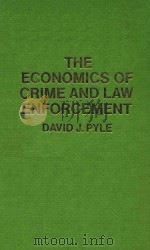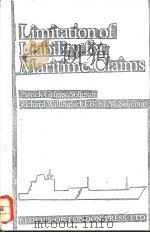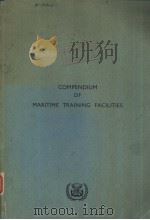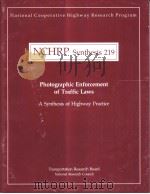《ENFORCEMENT OF MARITIME CLAIMS》
| 作者 | 编者 |
|---|---|
| 出版 | 未查询到或未知 |
| 参考页数 | 483 |
| 出版时间 | 没有确切时间的资料 目录预览 |
| ISBN号 | 1850440018 — 求助条款 |
| PDF编号 | 812918378(仅供预览,未存储实际文件) |
| 求助格式 | 扫描PDF(若分多册发行,每次仅能受理1册) |

PART Ⅰ. JURISDICTION AND MODE OF ENFORCEABILITY1
CHAPTER 1. SOURCES OF ADMIRALTY JURISDICTION3
1. The Admiralty framework of the Supreme Court Act 19813
(Ⅰ) The list of claims (s.20)3
(Ⅱ) The "maritime lien" (s.21(3))4
(Ⅲ) Actions "in personam" and actions "in rem" (s.21)4
"Action in personam"5
The Supreme Court Act 19815
"Action in rem"5
The Supreme Court Act 19815
2. Sources outside the Supreme Court Act 19816
Admiralty, Common Law and Equity6
Common Law and Equity6
Equitable intervention in the Common Law7
The effect of registration requirement7
Admiralty8
Statutes, judicial creativity and Admiralty8
3. Conclusion9
CHAPTER2. THE NATURE OF MARITIME CLAIMS10
1. Heads of jurisdiction-the framework of the Supreme Court Act 198110
Section 20(l)(a), (2) (4) (5) (6)10
Section 20(l)(b), (3)10
Section 21(3)10
Section 20(1)(c)11
Section 20(1)(d)11
2. Application of the framework despite foreign connections (s.20(7))11
Jurisdiction11
Choice of law11
3. Jurisdiction based on the past and the future12
A. Looking to the past12
The "sweeping up" clause-jurisdiction "immediately before the commencement of this Act" (s.20(l)(c))12
Jurisdiction conferred specifically by the Act of 195612
"Damage received by a ship" (s.20(2)(e))12
The sweeping up provision of the Administration of Justice Act 195613
Jurisdiction conferred by statute13
Non-statutory jurisdiction ("that was vested" prior to 1st November 1875)13
Construction of heads of claim in Supreme Court Act 198113
Jurisdiction not referred to in Supreme Court Act 198113
B. Looking to the future14
Jurisdiction assigned to the Admiralty Court by Rules of Court (s.20(l)(d))14
4. Categories of enforceability14
Claims enforceable by action "in rem"15
(Ⅰ) Claims attracting maritime lien or "other charge"15
(a) Uncertainties of maritime liens16
(b) Foreign maritime liens16
(c) Maritime liens and extension of jurisdiction by statute16
(d) Established maritime liens17
(e) Statutory extensions by analogy30
(f) Claims in respect of which a maritime lien has been suggested31
(g) "Or other charge"33
(Ⅱ) Claims enforceable by action"in rem" against the relevant property or ownership of a share in a ship33
(a) Claim to ownership or possession of a ship or share in a ship (s.20(2) (a))33
(b) Any questions arising between co-owners of a ship as to possession, employment or earnings of the ship (s.20(2)(b), 20(4))34
(c) Any claim in respect of a mortgage of or charge on a ship or any share therein (s.20(2)(c), 20(7)(c))34
(d) Any claims for the forfeiture or condemnation of ship or goods, the restoration of ship or goods after seizure or droits of Admiralty (s.20(2)(s))35
(Ⅲ) Claims enforceable "in rem" against a ship or "sister ship" (s.20(2)(d)-(r))37
Jurisdiction and enforceability "in rem" compared37
(a) Any claim for damage received by a ship (s.20(2) (d))38
(b) Any claim for damage done by a ship (s.20(2)(e))39
(c) Any claim for loss of life or personal injury, etc. (s.20(2)(f))40
(d) Any claim for loss of or damage to goods carried in a ship (s.20(2)(g))41
(e) Any claim arising out of an agreement relating to the carriage of goods in a ship or to the use or hire of a ship (s.20(2) (h))44
(f) Any claim in the nature of salvage (s.20(2)(j))48
(g) Any claim in the nature of towage in respect of a ship (s.20(2)(k))49
(h) Any claim in the nature of pilotage in respect of a ship (s.20(2)(1))50
(Ⅰ) Any claim in respect of goods or materials supplied to a ship for her operation or maintenance (s.20(2) (m))50
(j) Any claim in respect of the construction, repair or equipment of a ship or in respect of dock charges or dues (s.20(2)(n))51
(k) Any claim by a master or member of the crew of a British or non-British ship for wages (including any sum allotted out of wages or adjudged by a superintendent to be due by wages)(ss.20(2)(o),and 24(2)(a))51
(l) Any claim by a master, shipper, charterer or agent in respect of disbursements made on account of a ship (s.20(2)(p))53
(m) Any claim arising out of an act which is or is claimed to be a general average act (s.20(2)(q))54
(n) Any claim arising out of bottomry (s.20(2) (r))55
Claims enforceable by action "in personam"55
Availability of action "in personam"55
Claims enforceable only by action in personam55
The categories of claim56
(Ⅰ) Any claim for damage received by a ship56
(Ⅱ) Any application in the High Court under the Merchant Shipping Acts 1894-1981 (s.20(l)(b) and 20(3)(a))56
(Ⅲ) "Collision" actions (s.20(l)(b) and 20(3)(b))56
(Ⅳ) Limitation actions (s.20(l)(b) and 20(3)(c))57
(Ⅴ) The sweeping up clause (s.20(1) (c))57
CHAPTER 3. ENFORCEMENT OF MARITIME CLAIMS BY AN ACTION "IN PERSONAM"58
1. Service of process and jurisdiction58
2. The claims for which an action "in personam" is available58
3. Nature of the action "in personam" as compared to the action "in rem"59
Security for the claim60
4. Commencement of the action "in personam"60
Through an action "in rem"61
Service of a writ "in personam" outside England62
Claims for which leave to "serve out" may be sought62
RSC Order 1162
RSC Order 7563
Discretion in granting the application63
RSC Order 1163
RSC Order 75, rule 464
5. Jurisdiction in actions "in personam"64
Submission to the jurisdiction65
(a) Through procedural steps65
(b) Through submission before the court65
(c) Through a "forum clause"65
The Civil Jurisdiction and Judgments Act 198265
The EEC framework66
General jurisdiction rules66
Special jurisdiction rules67
Insurance matters67
Consumer contracts68
Other specified matters68
Relationship with actions "in rem"69
6. Security aspects of an action "in personam"69
7. Remedies available69
A. On the merits69
B. Provisional remedies梩he "Mareva" injunction70
8. County Court jurisdiction70
CHAPTER 4. ENFORCEMENT OF MARITIME CLAIMS BY AN ACTION"IN REM"71
1. Availability of the action "in rem"71
Claims specified by the Supreme Court Act 198171
(a) The Supreme Court Act 1981, s.21(2) and (4)71
(b) Maritime liens (s.21(3))72
(c) The "sweeping up" clause (s.20(l)(c))72
(d) Damage received by a ship (s.20(2)(d))72
2. Actions "in rem" and specified categories of claim73
Action "in rem" in relation to claims within s.20(2)(e)?r)73
A. Against the particular ship73
(a) Legislative history and present scope74
(b) The critical "in personam" link points76
B. Against a "sister" ship (Ⅰ.e. a ship other than the particular ship)78
(a) May an action "in rem" be brought against a sister ship other than that in the same ownership as the ship in respect of which the claim arose?79
(b) If an action "in rem" may be brought in relation to a ship owned by a "charterer" does this include a time or voyage charterer?80
Action "in rem" in relation to claims and questions within s.20(2)(a)(b)(c), (s)80
The "sweeping up" clause81
"Maritime lien or other charge" (s.21 (3))81
The concept of maritime lien82
"Or other charge"82
3. The Supreme Court Act 1981 as a jurisdictional framework82
4. Link between the issue and England required for an action "in rem" to be brought82
The basic rule82
The basic rule is qualified83
Civil Jurisdiction and Judgments Act 198283
5. The effect of ther nature of the action "in rem" on procedure and remedies84
6. The inter-relationship of action "in personam" and action "in rem"84
7. Commencement of an action "in rem"85
8. County Court jurisdiction85
CHAPTER5. DELAY IN SUIT86
1. Effect of delay86
Extinguishment of right or remedy?86
Avoidance of effect of delay87
2. Aspects of delay87
Ⅰ. Jurisdiction clauses and a time bar87
Ⅱ. Notice of the claim88
Ⅲ. Commencement of suit-issue of writ88
Statutory time limits89
The general pattern89
Limitation periods for particular types of claim89
The limitation framework90
(Ⅰ) Statutes specifying particularly limitation periods90
(Ⅱ) The general pattern-The Limitation Act 198093
Delay in service of writ97
Want of prosecution of a claim99
Delay in assertion of the remedy100
Judgment on order on the merits100
Provisional remedies100
3. Relevance of a foreign element101
CHAPTER 6. RESTRICTIONS ON THE EXERCISE OF JURISDICTION102
A. Restrictions on English proceedings102
1. Jurisdictional agreements102
Construction of the clause103
Statutory and Convention provisions relevant to jurisdictional agreements103
(a) The Civil Jurisdiction and Judgments Act 1982103
(b) Other Conventions104
The Hague and Hague-Visby Rules104
The jurisdictional clause and its effect106
(a) Stay of proceedings106
The relevance of the foreign law108
The time bar108
The unfair trial109
(b) Leave to serve a writ "in personam" out of the jurisdiction109
Jurisdictional agreements and arrest110
2. Arbitration agreements110
Arrest and arbitration clauses110
3. The appropriate forum-"forum conveniens"111
The role of the "natural forum"112
The burden of proof114
The relevance of concurrent foreign proceedings115
The plaintiff's right to choose the forum116
The appropriate forum and jurisdictional agreements117
4. Sovereign immunity117
A. Foreign governments117
(Ⅰ) The general framework117
(Ⅱ) Maritime claims120
B. Government of the United Kingdom122
"Crown" liability "in personam"122
"Crown" liability "in rem"123
(a) The Crown Proceedings Act 1974 and Supreme Court Act 1981123
(b) The Pre-statute framework124
5. Restrictions on specific types of claims125
(Ⅰ) Nuclear activities125
(Ⅱ) Actions for trespass to foreign land125
(Ⅲ) The Rhine Navigation Convention 1868126
(Ⅳ) Foreign ships127
(Ⅴ) Trade disputes-immunity from suit128
(Ⅵ) Insurance contracts-ack of enforceability129
6. Abuse of process129
B. Restriction on foreign proceedings130
Protection of Trading Interests Act 1980130
Acting contrary to jurisdictional or arbitration agreement131
Security proceedings131
CHAPTER7. ARBITRATION133
Relationship between English courts and English arbitrations133
The arbitration clause and the substantive contract134
Arbitrations and the law to be applied135
Ⅰ. The governing law135
Ⅱ. English law and English arbitrators135
Ⅲ. The New York Convention on the Recognition and Enforcement of Foreign Arbitral Awards 1968136
The English statutory framework-The Arbitration Acts 1950, 1975 and 1979136
Ⅰ. The general framework136
Ⅱ. Power of the courts in respect of arbitration proceedings Arrest137
Ⅲ. Judicial review of and appeal from arbitration decisions138
Ⅳ. Exclusion of appeal to the High Court139
Delay in arbitration proceedings142
Ⅰ. In commencement of proceedings142
Ⅱ. Power in court to extend periods fixed by arbitration agreement142
Ⅲ. Delay in prosecution of proceedings144
(a) Control by arbitrator144
(b) Control by the courts144
Staying of court proceedings146
The arbitration award and its enforcement148
English arbitration awards148
Foreign arbitration awards148
PART Ⅱ. INTERIM RELIEF149
CHAPTER 8. NATURE AND BASIS OF INTERIM RELIEF151
Ⅰ. The obtaining of evidence152
Ⅱ. Controlling of actions of parties prior to hearing152
Ⅲ. Measures against dissipation of defendant's assets153
A. Preservation of property153
B. "Mareva" injunction153
C. Arrest of ship, cargo or freight154
Ⅳ. A substantive remedy prior to hearing on merits154
Procedure for obtaining of interim relief155
Arrest155
Other modes of interim relief155
Interim relief in arbitration proceedings156
CHAPTER 9. ARREST AND ALTERNATIVE SECURITY157
Introduction157
The three functions of arrest157
The civil law approach157
Constitutional issues157
Alternative security157
The international approach158
Arrest-the international scene158
Convention Relating to the Arrest of Sea Going Ships 1952159
The Arrest Convention and the EEC Jurisdiction Convention160
The Hamburg Rules 1978160
The Convention on the Contracts for the International Carriage of Goods by Road 1956 (The CMR)161
Limitation of shipowners' liability Conventions 1924, 1957 and 1976162
Summary162
The arrest framework in English law163
Ⅰ. Arrest and the action "in rem" in English law163
Ⅱ. Arrest as security163
Bankruptcy or company liquidation164
Bankruptcy164
Liquidation of companies164
Ⅲ. Property or ship liable to arrest164
Ⅳ. Warrant of arrest and writ "in rem"165
V. Stage in proceedings when arrest available166
Ⅵ. Restrictions on availability of arrest167
(a) Restrictions specifically imposed on arrest167
Government Ships and Other Property167
Abuse of Process168
(b) Consequences of lack of jurisdiction on merits168
Assertion of jurisdiction "in rem"-the issue of the writ168
Ground of challenge to the issue of a writ169
Staying or dismissal of proceedings169
Discretionary power to refuse to sustain arrest169
Problem areas-arbitration, and foreign jurisdiction170
Discretionary power to decline jurisdiction-power to attach conditions170
The Arrest Convention170
The Civil Jurisdiction and Judgments Act 1982171
The Arbitration Act 1950171
Power to make release from arrest conditional172
(c) Foreign arrest173
Arrest following a foreign arrest173
Arrest-Commencement and duration173
Ⅰ. The warrant of arrest173
Ⅱ. Admiralty Marshal's fees and expenses174
Undertaking to pay174
Where there is more than one arrest175
Ⅲ. Arrester's expenses175
Ⅳ. Rights and liabilities in respect of property under arrest176
Rights of third parties affected by the arrest176
Rights existing at or before arrest177
Intervention in proceedings177
Expenses of discharge of cargo178
"Wrongful" arrest178
Termination of arrest179
Ⅰ. Release from arrest179
Limitation of liability and release from arrest179
Ⅱ. Judicial sale181
Security alternative to arrest181
Ⅰ. Caveat against release from arrest182
Liability in damages of caveat holder182
Ⅱ. Security in substitution for arrest182
Bail, payment into court, guarantee182
Bail183
Release of property arrested183
Rearrest184
Foreign bail in respect of English proceedings184
English bail in respect of foreign proceedings185
Payment into court185
A Guarantee or undertaking185
Arrest and detention186
Arrest and execution of judgment186
CHAPTER 10. THE "MAREVA" INJUNCTION187
Nature and purpose187
The root and development of the injunction187
Need for jurisdiction "in personam" in relation to the substantive cause of action188
Ⅰ. Jurisdiction "in personam"188
Ⅱ. Jurisdiction "in rem"189
Criteria for granting of injunction190
Ⅰ. No requirement of a "foreign" defendant190
Ⅱ. Requirement of assets in England or Wales190
Ⅲ. Need for (A) risk that assets will disappear and (B) likely default191
Ⅳ. Requirement of an undertaking in damages and expenses191
Case to be made by the plaintiff191
Need for "a good arguable case"192
Need for risk that judgment will not be satisfied193
Variation of the injunction194
The form of the order-the "maximum sum" approach195
Ancillary orders in aid of the injunction195
The effect of the injunction196
Ⅰ. In relation to the defendant196
Ⅱ. In relation to third parties196
The "knowledge" required for breach196
Limitations on restrictions of action of third party by injunction197
Effect of injunction on third party as grounds for refusal to grant197
Comparison of arrest and "Mareva" injunction as provisional remedies-a summary198
PART Ⅲ. SECURITY ON THE MERITS-THE LIEN CONCEPT199
CHAPTER 11. NATURE AND DEVELOPMENT OF LIENS201
1. The nature of a "lien"-or what's in a word?201
Lien and mortgage201
Lien and charge202
The floating charge202
2. The development of liens in English law203
A. Common law, Equity and statute203
The possessory lien203
The equitable lien203
The statutory lien204
B. Admiralty204
(Ⅰ) Applicability of liens of common law, equity and statute204
(Ⅱ) Admiralty liens204
3. Which lien and when?204
Priorities205
4. Foreign liens205
5. Liens and the registration of interests206
6. Maritime liens, statutory liens in Admiralty and the action "in rem"207
A. The concept of lien and the action "in rem"207
The Supreme Court Act 1981 and the action "in rem"208
(Ⅰ) Maritime lien (Supreme Court Act 1981, s.21(3))208
(Ⅱ) Claims based on Supreme Court Act 1981, s.20(2)(a)-(c), (s)208
(Ⅲ) Claims within the sweeping up clause208
(Ⅳ) Claims based on Supreme Court Act 1981, s.20(2)(e)-(r)208
(Ⅴ) An escape from further uncertainty-the reform that wasn't209
B. The nature of the action "in rem"209
C. The action "in rem"-procedure, personification or neither?210
(Ⅰ) Procedure210
(Ⅱ) Personification211
(Ⅲ) A third view-hypothec and deodand211
D. Factors of procedure and substance in the action "in rem"212
Substance212
Procedure212
E. The action "in rem"-the procedural and personification views and present rules213
The procedural view213
The personification view214
F. The relevance of the procedural/personification debate to the modern action "in rem"214
CHAPTER 12. MARITIME LIENS216
1. Claims to which a maritime lien may attach216
2. Consequences of attracting a maritime lien216
3. The nature of the maritime lien218
Ⅰ. The maritime lien and the action "in rem"218
Ⅱ. The "maritime lien" as a legal category of claims218
At the time of "The Bold Buccleugh"-in 1851219
Ⅲ. The modern maritime lien and statutory lien in Admiralty compared220
Ⅳ. The maritime lien-procedure or substance?221
"The Bold Buccleugh"221
Modern views of "The Bold Buccleugh"222
4. Assets subject to a maritime lien224
Ⅰ. A ship224
Things that go upon the water224
A ship, its parts and things on board224
The ship's apparel and salvage claims226
Ⅱ. Other property226
(a) Freight226
(b) Cargo227
Bottomry and Respondentia227
Salvage227
5. Enforceability of maritime liens228
Procedure or personification228
Different aspects of enforceability228
(Ⅰ) Enforceability of the claim "in personam"229
(Ⅱ) Enforceability against other creditors229
(Ⅲ) Enforceability against purchasers229
(Ⅳ) Enforceability against asset when the present owner is not liable "in personam"229
(a) The differing contexts in which the lack of personal liability of the shipowner arises229
(b) A general principle of shipowner's liability231
(c) The different claims and the development of the need for the shipowner's liability233
6. Transferability of maritime liens236
Ⅰ. Voluntary transfer236
(Ⅰ) Assignment236
Bottomry bonds236
Maritime liens apart from bottomry bonds236
Restrictions on assignment of wages238
(Ⅱ) Subrogation239
(Ⅲ) Voluntary payment of claims239
Ⅱ. Involuntary transfer240
(Ⅰ) Bankruptcy and death240
(Ⅱ) Statutory right to contribution240
7. Extinction of maritime liens240
Ⅰ. Immunity from suit240
Foreign States240
The United Kingdom Government241
Ⅱ. Delay of suit241
Ⅲ. Loss of right to arrest through stay of proceedings241
Arbitration or foreign jurisdiction clause241
Effect on maritime lien attached to property retained241
Equivalent security242
Effect on maritime lien attached to property not arrested or released242
Ⅳ. Lodging of bail or provision of other security242
(a) Bail242
Limitation of liability-limitation action243
(b) Payment into court243
(c) Security by way of guarantee or undertaking243
V. Bankruptcy and liquidation244
Bankruptcy244
Liquidation244
Ⅵ. Agreement, waiver and estoppel245
VⅡ. Destruction of the property246
VⅢ. Judgment on liability246
Ⅸ. Judicial sale246
8. The international framework relating to maritime liens246
Ⅰ. The Convention of 1926247
Mortgages247
Maritime liens248
Other liens248
Ⅱ. The Convention of 1967249
Principal changes from the Convention of 1926249
The pattern of the Convention249
Mortgage and hypotheques249
Maritime liens249
Other liens250
CHAPTER 13. STATUTORY LIENS IN ADMIRALTY251
The action "in rem" and statutory lien in Admiralty251
1. Nature of the "statutory lien"251
Ⅰ. Origins-Admiralty Court Acts 1840 and 1861251
Admiralty Court Acts 1840 and 1861 and maritime liens251
Statutory extensions of the action "in rem" after 1861252
Ⅱ. The Supreme Court Act 1981-the present framework for the action "in rem"252
Ⅲ."The statutory lien in Admiralty"-is it to be equated with the action "in rem"?253
(a) The action "in rem"-substance or procedure?253
(b) The nature of the claims attracting the action "in rem"254
(Ⅰ) Claims in s.20(2) (e)-(r)-the proprietary role of the action "in rem"254
(Ⅱ) Claims in s.20(2)(a)(b)(c) and (s)-the procedural role of the action "in rem"255
(Ⅲ) Claims within s.20(l)(c)(d)-past and future jurisdiction256
Ⅳ. Summary256
(Ⅰ) The need for precise analysis256
(Ⅱ) The need for legislative clarification257
(a) Priority257
(b) Enforceability against third parties257
2. Creation of the lien258
3. Assets subject to the lien258
Ⅰ. Claims under s.21(4)258
Ⅱ. Claims under s.21(2) or s.20(1)(c)259
4. Transferability259
5. Termination259
6. The legal consequences of attracting the action "in rem"-a summary259
CHAPTER 14. POSSESSORY LIENS261
Nature of a possessory lien261
Assets subject to the lien261
A. Common law possessory liens (applying to but not created primarily in maritime law)261
1. Generally applicable principles262
(Ⅰ) Commencement of the lien262
A contractual right to a possessory lien262
(Ⅱ) Enforceability of the lien262
(a) Against creditors263
(b) Against third parties other than creditors263
(Ⅲ) Termination of the lien263
(a) Loss of possession263
(b) Taking of action inconsistent with a possessory lien264
(c) Tender of amount due264
2. General liens264
(a) By usage264
Claims to which a general lien may attach264
Enforceability of the lien265
(b) By contract265
(c) By statute266
Particular liens266
(a) By usage266
Claims to which a particular lien attaches266
(b) By contract268
(c) By statute268
B. Maritime possessory liens268
Maritime and other possessory liens268
Claims to which maritime possessory liens may attach268
Enforceability of the maritime possessory lien269
The individual liens269
(Ⅰ) The shipowner's lien on cargo for freight269
Continued existence after delivery of possession to warehouse269
Termination270
Sale of landed goods270
(Ⅱ) Shipowner's lien for average contributions271
(a) General average271
(b) Particular average271
(Ⅲ) The salvor's lien271
Agent's lien271
(Ⅳ) Warehouseman's lien for wharf or warehouse charges271
(Ⅴ) The broker's lien272
Enforceability272
(Ⅵ) Harbour and other public authorities273
Statutory rights of detention273
Need to detain273
The power of sale273
CHAPTER 15. EQUITABLE LIENS274
1. The substance of the lien274
Equitable lien and equitable charge274
Reservation of title clause275
2. The equitable lien in Admiralty275
3. Creation of the lien275
Ⅰ. By contract275
Bills of Sale Acts 1878 and 1882275
Companies Act 1948, s.95276
Ⅱ. Arising from the relationship of the parties276
Vendor's lien for unpaid purchase money276
Ⅲ. Arising from a course of conduct276
4. Enforceability of the lien277
Ⅰ. Against third parties277
Ⅱ. Tracing into other assets277
5. Transferability278
6. Termination278
CHAPTER 16. LIEN CLAUSE IN CHARTER-PARTY OR BILL OF LADING279
A. Charter-parties279
1. The lien clause279
2. The lien clause in the context of the document as a whole280
3. The liens created by the charter-party clause280
(Ⅰ) Shipowner's lien on cargo280
(a) Nature of lien280
(b) "All cargoes"280
(Ⅱ) Owner's lien on subfreights282
(a) Nature of the lien282
(b) Does "freight" include charter-party hire?282
(c) Does the clause include "sub sub freights"?282
(Ⅲ) Charterer's lien on ship282
Nature of the lien282
(Ⅳ) Lien not to be suffered or permitted to continue283
4. Charterer's liability dependent on exercise of owner's lien283
5. The governing law283
B. Bill of lading284
CHAPTER 17. PRIORITIES285
Ⅰ. The general problems of priority285
Ⅱ. Principles of priority in English law286
1. The basic principles of "in personam" priority286
Legal and equitable interests286
Other modifications286
Maritime claims "in personam"287
2. The Admiralty rules of priority "in rem"287
"In rem" priority categories288
"In personam" priority principles in the "in rem" framework288
3. Priority between "in rem" and "in personam" claims288
Ⅲ. The priority framework in English law288
1. Title (or ownership)289
"In personam" priority289
(Ⅰ) Equitable interests289
(Ⅱ) Other modifications of "first in time"290
"In rem" priority292
2. Use for a specified period of time292
(Ⅰ) Charter-party292
"In personam" priority292
"In rem" priority293
(Ⅱ) Lease or bailment293
"In personam" priority293
"In rem" priority293
3. Security interests293
A. General principles294
"In personam" priority294
Registration provisions294
"In rem" priority296
B. Priority and each security interest296
(Ⅰ) Mortgage296
Bottomry and/or respondentia299
(Ⅱ) Charges299
(Ⅲ) Pledge300
(Ⅳ) Liens301
Ⅳ. Priority relationship between actions "in rem" and "in personam" proprietary interests311
Ⅰ. Ownership312
Ⅱ. Mortgage, charge and lien312
Ⅲ. Interests created by statute312
Statutory rights of port authorities to detention and sale of ships312
Solicitor's lien under the Solicitors Act 1974313
Limitation actions313
Ⅳ. The execution creditor314
A charging order314
Effect of judicial sale in the action "in rem"315
Summary315
Priority between "in rem" claims and proprietary interests "in personam"315
V. Attempts at international frameworks梞ortgages and liens315
PART Ⅳ. THE FOREIGN ELEMENT317
CHAPTER 18. APPLICATION OF FOREIGN LAW319
Ⅰ. The English approach319
1. The three-stage English choice of law process319
The operation of English "public policy"320
2. Limitations on the selection process320
(a) The scope of the dispositive rule320
Substantive limitation320
Territorial limitation of a dispositive rule321
(b) A forum mandatory dispositive rule321
(c) Foreign law deemed to be English law322
3. Choice of law and jurisdiction322
(a) Discretionary jurisdiction-evance of governing law322
(b) Statutory claims322
4. Maritime claims and the English choice of law process322
The problem of the high seas322
Maritime claims323
Statutory claims-Airalty jurisdiction and choice of law323
Ⅱ. Alternative approaches to selection by classification qualified by public policy324
Ⅲ. The categories and their selection rules325
1. Substance or procedure325
(a) Time bars325
(b) Priorities326
The role of the law of the forum326
Maritime claims326
(c) Remedies327
(d) Evidence327
2. Choice of law for substantive issues328
(a) Contract329
The proper law of the contract329
(b) Tort334
(c) Restitution339
(d) Proprietary issues342
Summary348
CHAPTER 19. FOREIGN JUDGMENTS AND FOREIGN ARBITRAL AWARDS350
Ⅰ. Foreign judgments350
1. Merger of action and judgment350
2. Judgments given in proceedings brought contrary to a jurisdictional agreement350
3. The English framework for recognition and enforcement351
Recognition and enforcement351
A. Judgments within the Civil Jurisdiction and Judgments Act 1982352
(a) Convention judgments352
(b) Enforceability of judgments of United Kingdom courts within the United Kingdom354
B Judgments outside the Civil Jurisdiction and Judgments Act 1982354
Ⅱ. Foreign arbitral awards361
Merger of cause of action into award361
English law362
(a) Without registration362
(b) Registration363
PART V. REMEDIES365
CHAPTER 20. REMEDIES IN ACTIONS ON THE MERITS367
1. Remedies generally and remedies in Admiralty367
(a) Remedies and grounds367
(b) Jurisdiction over remedies367
Remedies in actions "in personam"367
Remedies in actions "in rem"368
2. Actions "in personam" and available remedies368
A. Types of remedies368
B. Enforcement of judgments or orders371
C. The possessory lien373
3. The action "in rem" and available remedies373
Ⅰ. Judicial sale373
(a) General powers373
(b) Property under arrest in an action "in rem"374
Ⅱ. Remedies "in personam"375
(a) Damages375
(b) Equitable remedies376
APPENDICES377
APPENDIX 1. STATUTES OF THE UNITED KINGDOM (Extracts)377
1. Supreme Court Act 1981 (c.54) ss.20-24377
2. Administration of Justice Act 1956 (4 and 5 Eliz. 2, c.46)382
APPENDIX2. INTERNATIONAL CONVENTIONS (Extracts)388
1. International Convention for the Unification of Certain Rules Relating to the Arrest of Sea Going Ships 1952388
2. International Convention for the Unification of Certain Rules Relating to Maritime Liens and Mortgages 1926394
3. International Convention for the Unification of Certain Rules Relating to Maritime Liens and Mortgages 1967401
APPENDIX3. RULES OF THE SUPREME COURT 1965 (Extracts) (Amended to 1st August 1984)408
APPENDIX4. SUPREME COURT FORMS426
APPENDIX5. FOREIGN LAWS437
1. Enforcement of Maritime Claims, Liens and Arrest in Scandinavia (Professor Thor Falkanger)437
2. Maritime Claims, Arrest and Liens in France (Professor B. Mercadal)448
3. Enforcement of Maritime Claims, Arrest and Liens in Poland (Professor Woljciech Adamczak)461
INDEX470
《ENFORCEMENT OF MARITIME CLAIMS》由于是年代较久的资料都绝版了,几乎不可能购买到实物。如果大家为了学习确实需要,可向博主求助其电子版PDF文件。对合法合规的求助,我会当即受理并将下载地址发送给你。
高度相关资料
-

- KANT AND THE CLAIMS OF KNOWLEDGE
- 1987 CAMBRIDGE UNIVERSITY PRESS
-

- Maritime Liens and Claims Second Edition
- 1998 International shipping Publications
-

- Construction claims
- 1999 Sweet & Maxwell
-

- INTRODUCTION TOLAW ENFORCEMENT
- 1980 COPYRIGHT
-

- THE ENFORCEMENT OF MORALS
- 1965 OXFORD
-

- MARITIME LAW OF SALVAGE
- 1983 STEVENS AND SON
-
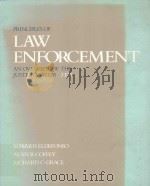
- PRINCIPLES OF LAW ENFORCEMENT AN OVERVIEW OF THE JUSTICE SYSTEM
- 1968 JOHN WILEY AND SONS
-

- SETTLED OUT OF COURT THE SOCIAL PROCESS OF INSURANCE CLAIMS ADJUSTMENT
- 1980 ALDINE PUBLISHING COMPANY
-

- Air cargo claims
- 1998 LLP
-

- ENFORCEMENT OF FOREIGN JUDGMENTS WORLDWIDE SECOND EDITION
- 1993 GRAHAM & TROTMAN
提示:百度云已更名为百度网盘(百度盘),天翼云盘、微盘下载地址……暂未提供。➥ PDF文字可复制化或转WORD
